Why Embedded FPGA?
- Flexibility
- Supports changing requirements, multiple un-ratified standards, multiple chip variants
- Lower R&D Costs
- Reduces total development cost and time to bring multiple SoCs to market
- Increase Performance
- Integration of eFPGA into an SoC increases performance by eliminating chip-to-chip delays
- Lower System Power Consumption
- QuickLogic has optimized eFPGA from the ground up for low power
- Possible integration of hardware accelerators using programmable logic to offload the main CPU
- Fine-Grain Architecture
- LookUp Tables
- Two independent LUT3s or One LUT4
- Multiplexers
- Up to 8:1 mux & independent 2:1 mux
- Optional Flip Flop
- LookUp Tables
- Multiple inputs and outputs enable independent logic to share the same logic cell
- This leads to much higher logic cell utilization in ‘real life’ designs
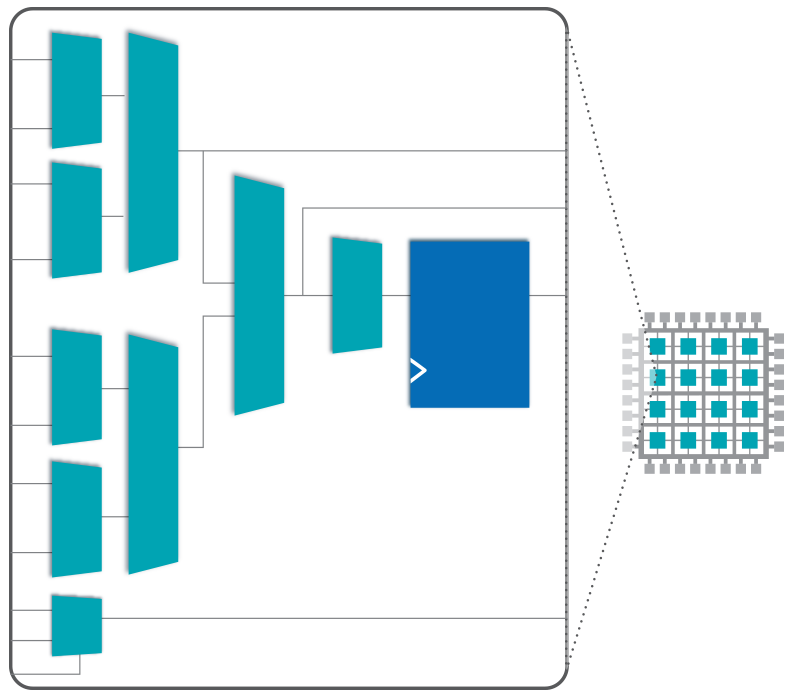
Applications
Hardware Accelerators for Machine Learning SoC
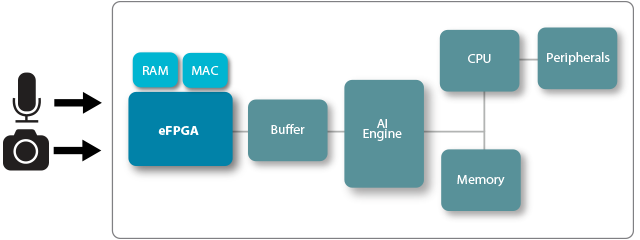
- Sensor inputs for AI engines comes in different sizes and formats, so eFPGA is a great way to ensure compatibility and preprocessing of images, videos or voice inputs for machine learning
- eFPGA is ideal for implementing reprogrammable hardware accelerators for feature extractors
Defense
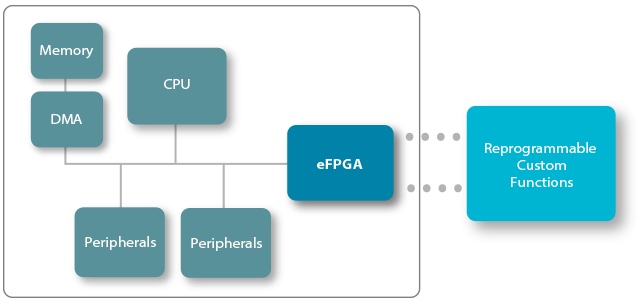
eFPGA is an ideal platform for updating and changing functions / algorithms, especially for systems that are deployed in the field where access is difficult
IoT – Addressing Multiple Markets with One Device
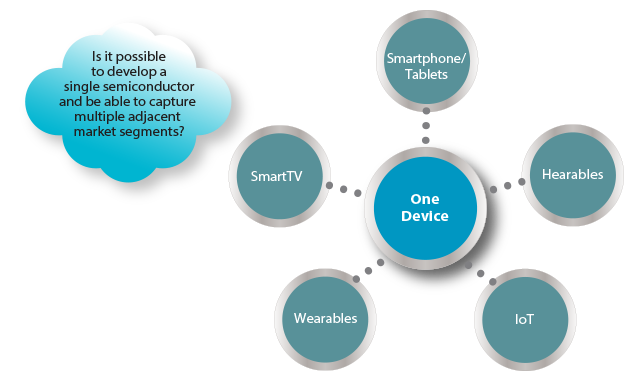
Security
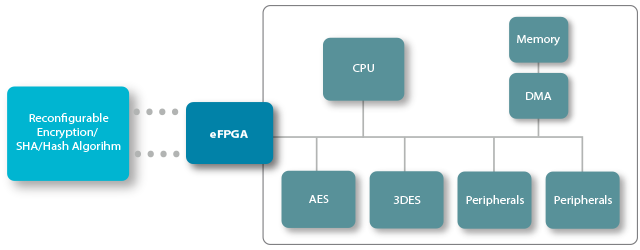
Common security algorithms can be implemented as hardened functions, but customers often prefer to have their own security algorithm on top of common security algorithms in order to make their application more secure.
